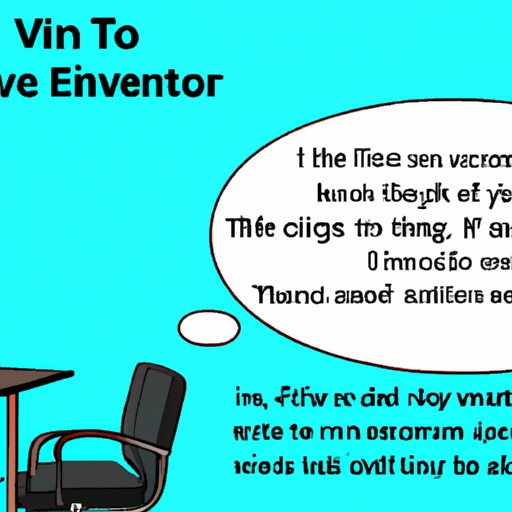
I. Introduction
As an employer, one of the most challenging and uncomfortable parts of your job is firing an employee. Whether it’s due to poor performance or downsizing, it’s crucial that you handle terminations with care and professionalism. In this article, we’ll discuss tips, best practices, and legal considerations for firing an employee to ensure the process is as smooth and successful as possible.
II. Tips for Conducting a Successful Termination Meeting
The way you communicate with the individual can make a big difference in how they handle the news. Be honest, direct, and respectful when breaking the news. It’s important to have a witness in the room to make sure that the process is fair. During the meeting, you should cover the reasons for termination, the effective date, and any information about severance, benefits, and references.
Moreover, it’s essential to be empathetic while having difficult conversations. If you’re dealing with a long-term employee, show compassion, and allow them to have their say. During the conversation, keep an open mind and remain sensitive to their feelings. Consider the communication from their perspective, which will help you deliver the message in a less severe way.
III. Best Practices for Documenting Performance Issues
Documentation is essential when it comes to termination. It acts as a record of an employee’s job performance and commences a progressive discipline approach. Performance documentation should be started from day one to monitor behavior, productivity, attendance, and other essential performance metrics.
To make sure you have adequate documentation, it’s crucial to provide employees with verbal and written warnings. Written warnings should be specific, focusing on the nature of the deficiency, what they can do to improve, and what will happen if they don’t do better. Having documented performance improves legal defensibility and reduces claims of unfairness.
IV. Terminating an Employee During Probationary Period
Employers can terminate employees during their probationary period without providing a specific reason. However, they cannot terminate for discriminatory reasons or reasons that breach a contract (like discrimination). Employers must ensure that they have valid reasons over the employee’s job performance and conduct to effectively defend their decision if challenged. You should provide written documentation indicating that the employee’s performance failed to improve substantially during the probationary period, making termination necessary.
V. Approaching an Employee with Improvement Plans
Improvement plans can enrich external communication and give your employee an opportunity to develop their skills. Employees should be informed of constructive feedback, and it’s critical feedback come from a place of support, not criticism. A constructive conversation can lead to a beneficial employee-manager relationship, increased rapport, and employee motivation. The plan should outline realistic, achievable goals and a timeline for reaching goals highlighting what the employee can expect from the employer.

VI. Guidelines for Conducting an Exit Interview
An exit interview is an opportunity for an organization to receive valuable feedback from an employee who is leaving. The purpose is to find areas for improvement within your organization and to obtain insight into employee grievances. You should focus on allowing the employee to feel comfortable and safe discussing their thoughts. Acknowledge their achievements, provide suggestions for personal growth, and ensure that feedback is taken seriously and acted upon.
VII. Addressing Employee Morale and Productivity Post-Termination
After a termination, it’s crucial to prioritize the remaining employees’ morale and productivity. Providing clarification and assurance to your employees that their job security is guaranteed can avoid feelings of vulnerability and anxiety. Communicate to employees that the terminated employee’s job performance was not reflecting the organization’s values, and that management acted based on objective metrics.
VIII. Ensuring Legal Compliance During and After Termination
Terminations are subject to many legal and regulatory requirements that vary based on location. When you terminate an employee, there is still a lot that needs to be done. Employees should understand what happens to their benefits, who they need to speak with, how long they will be paid, and what the organization expects of them. You should ensure that you’re following the right procedure by contacting your legal service provider, keeping an eye on compliance updates, and making regular regulatory assessments.
IX. Conclusion
Effective termination processes are crucial when it comes to the success of a company. By documenting performance issues, handling terminations with professionalism, and ensuring compliance, employers can minimize the impact of terminations and create a more productive and stable work environment.
It’s important to be empathetic when dealing with people’s livelihood, and it’s the employer’s responsibility to ensure that these situations are handled with decency. Follow our tips, best practices, and legal considerations, and you’ll be able to conduct a termination process, which will be beneficial for all parties involved.





